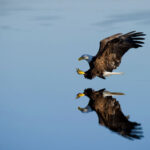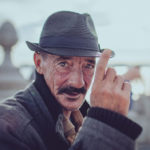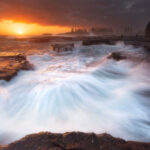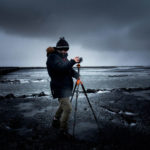Canadian based photographers 2D Photography give us a detailed look at the process they used during an underwater photoshoot. As an added bonus, the team runs through an above the water photoshoot before getting the submerged portion of the shoot set up. A Nikon D3S was used in both segments of the shoot with an Aquatech kit protecting the camera while under water. Because the nature of the shoot required the power of artificial lighting, Nikon SB900 Speedlights with Phottix Strata II triggers were used, some of which were powered using a Profoto 8A Air flash generator. Take a look at the video here:
As explained in the video, radio triggers do not perform over more than a few inches underwater. To remedy this issue, the transmitter was wedged into the Aquatech kit next to the camera with a vacuum sealed trigger and flash mounted on the outside of the kit. As the mounted flash fired, the optical slave triggered a boom mounted flash which then fired a pair of SP900’s. The two SP900’s were run on the Profoto 8A and were both equipped with parabolic reflectors. To round out the lighting setup, the SP900’s also used the optical slave to fire a final SP900 that was being held underwater.

Initial photo before post-processing
The photos, all shot in RAW, were imported into Apple’s Aperture, to preview and chose the best shots before they were imported into Adobe Photoshop, via Camera RAW. The videospeeds through the editing process, but here’s an overview of the steps that were took:
In Adobe Photoshop Camera Raw
- Completely desaturate the image.
- Bring up the exposure so the highlights are maintained, then
- Crush the blacks until the details of the subject are restored.
- Bring up the fill light and recovery to bring up the subject and highlights, respectively.
- Make adjustments to the clarity level until your subject has good definition.
- Finally, adjust the tone curve to make any minor changes and crop the image before opening in Photoshop.
In Adobe Photoshop:
- Use the lasso tool to select unwanted objects (in this example, bubbles) and blacken them out to match the background.
- Switch to the Dodge/Burn tool to bring out contrast of existing highlights and shadows.
- Use the Dust & Scratches tool to further eliminate any unwanted noise and bubbles on the subjects body
- The Liquify tool is used to fine tune the shape of the models body.
- And the photo is completed by applying a layer mask and painting in additional shadows and highlights.

Completed photo after post-processing
Though the photos being edited in the film are taken underwater, the editing process is applicable to above water images as well. The process enhances a well-exposed image by emphasizing the key-lighting, resulting in a black and white photograph on par with current monochrome style.
For further training on professional photo editing, we recommend these eBooks:
- Understanding Post-Processing – a practical guide to post-processing of photographs in Adobe Lightroom and Photoshop.
- Black and White Post-Processing – the final eBook in this collection is a masterclass on processing black and white photos in Adobe Lightroom.
- Photo Nuts and Post – a guide to getting started in post-processing.
Like This Article?
Don't Miss The Next One!
Join over 100,000 photographers of all experience levels who receive our free photography tips and articles to stay current:






nice share, few month ago i and my friends make a photo session with theme camping underwater.
some like crazy photoshoot. but this a real underwater camp. https://www.youtube.com/watch?v=B610NtrQybI maybe you wanna check this video behind the scene
The editing made the picture much better, underwater shots are so cool!